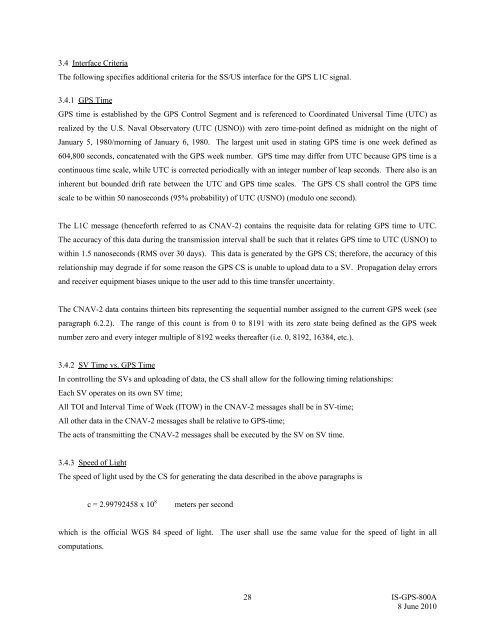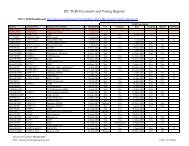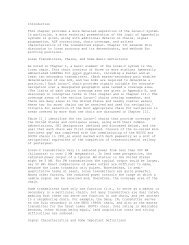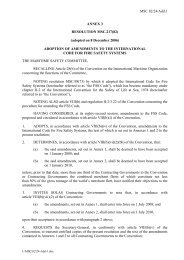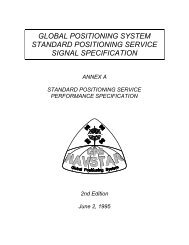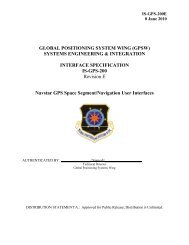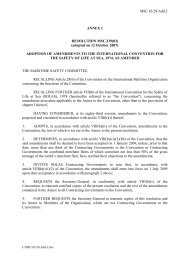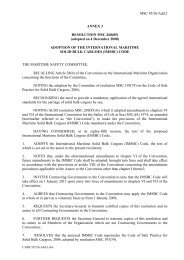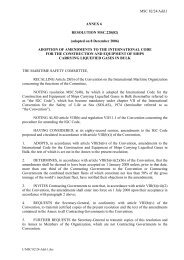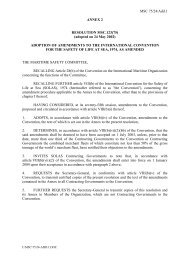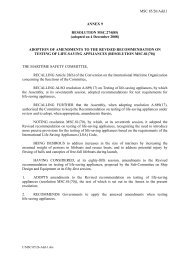IS-GPS-800A - US Coast Guard Navigation Center
IS-GPS-800A - US Coast Guard Navigation Center
IS-GPS-800A - US Coast Guard Navigation Center
Create successful ePaper yourself
Turn your PDF publications into a flip-book with our unique Google optimized e-Paper software.
3.4 Interface CriteriaThe following specifies additional criteria for the SS/<strong>US</strong> interface for the <strong>GPS</strong> L1C signal.3.4.1 <strong>GPS</strong> Time<strong>GPS</strong> time is established by the <strong>GPS</strong> Control Segment and is referenced to Coordinated Universal Time (UTC) asrealized by the U.S. Naval Observatory (UTC (<strong>US</strong>NO)) with zero time-point defined as midnight on the night ofJanuary 5, 1980/morning of January 6, 1980. The largest unit used in stating <strong>GPS</strong> time is one week defined as604,800 seconds, concatenated with the <strong>GPS</strong> week number. <strong>GPS</strong> time may differ from UTC because <strong>GPS</strong> time is acontinuous time scale, while UTC is corrected periodically with an integer number of leap seconds. There also is aninherent but bounded drift rate between the UTC and <strong>GPS</strong> time scales. The <strong>GPS</strong> CS shall control the <strong>GPS</strong> timescale to be within 50 nanoseconds (95% probability) of UTC (<strong>US</strong>NO) (modulo one second).The L1C message (henceforth referred to as CNAV-2) contains the requisite data for relating <strong>GPS</strong> time to UTC.The accuracy of this data during the transmission interval shall be such that it relates <strong>GPS</strong> time to UTC (<strong>US</strong>NO) towithin 1.5 nanoseconds (RMS over 30 days). This data is generated by the <strong>GPS</strong> CS; therefore, the accuracy of thisrelationship may degrade if for some reason the <strong>GPS</strong> CS is unable to upload data to a SV. Propagation delay errorsand receiver equipment biases unique to the user add to this time transfer uncertainty.The CNAV-2 data contains thirteen bits representing the sequential number assigned to the current <strong>GPS</strong> week (seeparagraph 6.2.2). The range of this count is from 0 to 8191 with its zero state being defined as the <strong>GPS</strong> weeknumber zero and every integer multiple of 8192 weeks thereafter (i.e. 0, 8192, 16384, etc.).3.4.2 SV Time vs. <strong>GPS</strong> TimeIn controlling the SVs and uploading of data, the CS shall allow for the following timing relationships:Each SV operates on its own SV time;All TOI and Interval Time of Week (ITOW) in the CNAV-2 messages shall be in SV-time;All other data in the CNAV-2 messages shall be relative to <strong>GPS</strong>-time;The acts of transmitting the CNAV-2 messages shall be executed by the SV on SV time.3.4.3 Speed of LightThe speed of light used by the CS for generating the data described in the above paragraphs isc = 2.99792458 x 10 8meters per secondwhich is the official WGS 84 speed of light. The user shall use the same value for the speed of light in allcomputations.28 <strong>IS</strong>-<strong>GPS</strong>-<strong>800A</strong>8 June 2010


